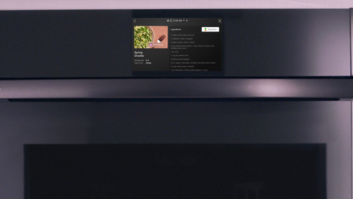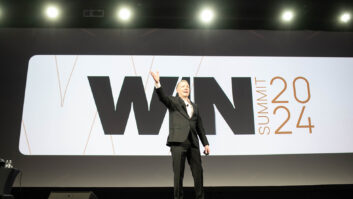Las Vegas — Seeing market share gains in LCD TV and strong fourth-quarter sales for rear-projection HDTV sets, manufacturers of plasma TVs are on a mission to make sure their technology remains top of mind among flat-panel TV buyers.
A group of PDP manufacturers are using the year-old Plasma Display Coalition (PDC) to dispel any notions that plasma panels are inferior to LCD TVs in longevity, power consumption, and overall picture performance.
Jim Palumbo, PDC president, is re-educating retailers, press, analysts and as many consumers as he can reach on the merits of plasma displays as a big-screen display option.
“Having accurate information is a vital requirement over the next two years as analog broadcast signals move closer to being shut off and as consumers continue to make the transition to flat-panel televisions,” Palumbo declared. “People are spending three or four times more money for a flat-panel TV historically than they have in the past for their picture tube sets.”
So what hasn’t been accurate?
Palumbo has a collection of consumer press articles stating things like: “Plasma TVs are prone to image burn in” and will last on average between 20,000 and 30,000 hours. Or, “Plasma devices use five times the power of a regular picture tube and are on a par with refrigerators.”
“These writers are picking up information from articles written a few years ago that are no longer true,” Palumbo said.
In fact, he said, plasma TVs today are no more prone to uneven aging of phosphors — erroneously called “burn in,” Palumbo insists — than other displays when treated properly. In addition, a typical plasma TV today can last between 50,000 and 60,000 hours, which roughly works out to 27 years of viewing at six hours per day.
Palumbo said the PDC ran its own torture tests on phosphor aging evaluating five plasma devices — four 50W-inches and one 55W-inch — running eight straight hours of checker boards, followed by eight continuous hours of color bars at the vivid mode, followed by eight continuous hours of CNBC.
“At the end of the test, three of the five models showed no residual ghosting. One model showed slight residual ghosting and the fifth model had a noticeable residual ghosting,” said Palumbo. “Each model was turned on to a white screen, which would replicate a movie, and within three minutes any residual ghosting had dissipated.”
He also contends that a plasma display does not draw inordinately high power levels, as some competitors contend.
He said plasma does not power consistent levels like other display technologies. Rather, it draws power variably depending on the light and dark sequences in a picture, and may use less electricity than a CRT-based rear-projection TV, for example, in actual usage.
To preach these and other messages from the plasma gospel, five plasma manufacturers, including Panasonic, Samsung, LG, Hitachi and Pioneer, are running retail sales training programs and targeted advertising to correct the misunderstandings.
Palumbo said the plasma coalition wants the world to know that plasma TVs have a number of key advantages over rival technologies including: a long lifespan (60,000 hours, before reaching half brightness in three manufacturers’ sets); ultra-fast motion performance (the same if not better than CRT); ultra-wide viewing angles; and consistent contrast, brightness and color levels throughout the screen.
Contrast and black-level performance has been cited as a weakness in most new digital display technologies in the past, but Palumbo said plasma technology has improved there, as well.
According to independent PDC tests, “Plasma delivered about a 3,000:1 contrast ratio, and this was measured two ways,” Palumbo said. “Plasma out performed a reference CRT monitor in the tests.”
He said a separate IDC evaluation showed similar results.
Palumbo concedes that LCD has a price advantage over plasma for panels with 1,080p resolution, but he downplayed the perceivable advantage to price-conscious consumers.
“Generally speaking for the public, when you are looking at a picture from a regular viewing distance and engaged in the content one HD picture is not going to look an different than another HD picture, distinguishing 1,080p. I think it is more of a retailer advantage than a consumer advantage.”












